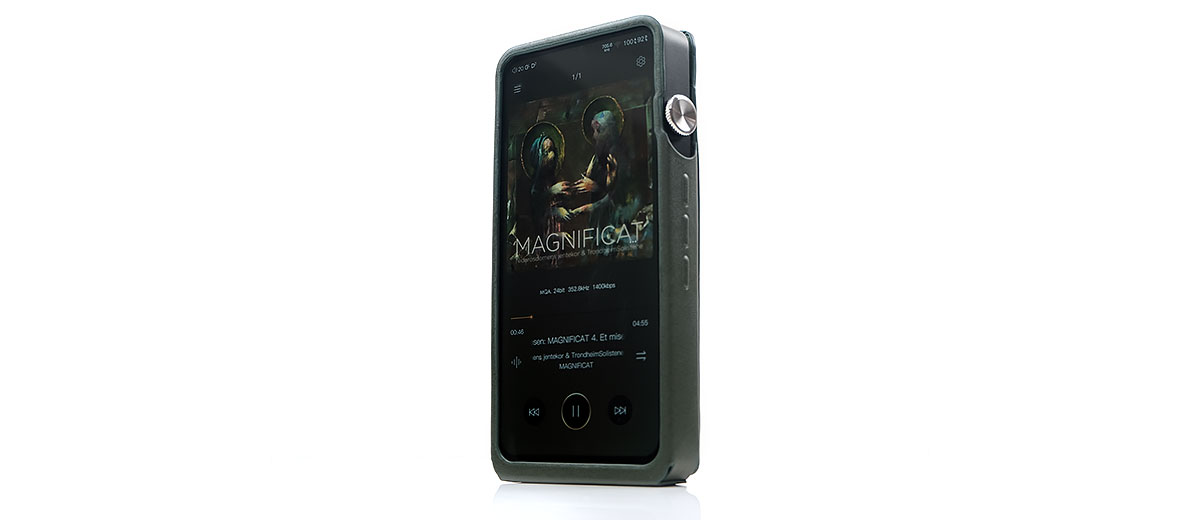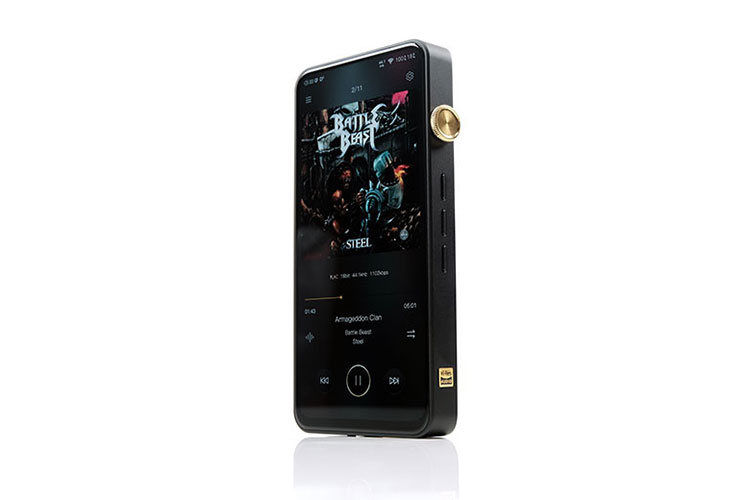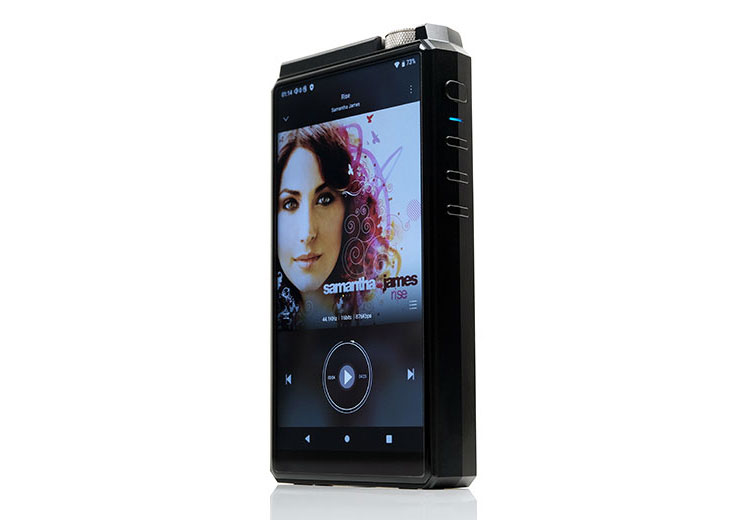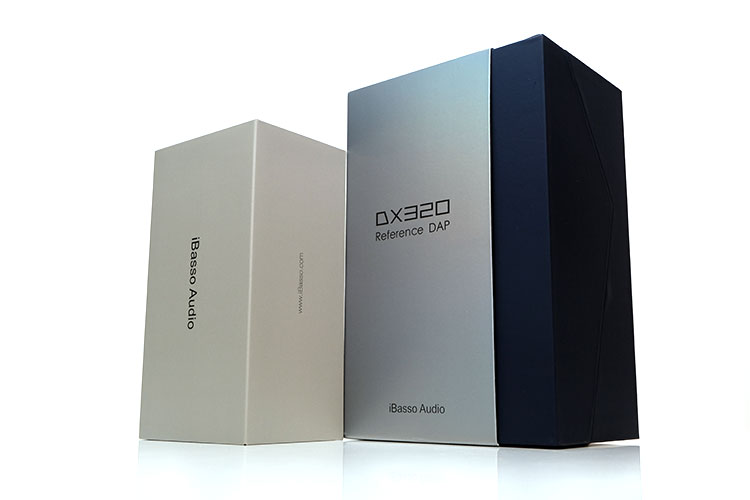Select Comparisons
All comparisons were carried out using stock AMP cards in the iBasso units. Headgear included the Empire Ears Legend EVO, JH Audio’s Sharona, and VE’s Phonix IEM. Headphones also included the Meze Audio Liric and the HIFIMAN Arya Stealth Magnet Version.
iBasso DX300
The iBasso DX300 is the former flagship DAP alongside AMP11 MK1 and is now discontinued. You can read our full review of the DX300 when it was launched here.
$1199
Technical
We have covered a lot of the important comparisons already so I will try to make this fairly brief. Both DAPs have what I call left-of-field DAP solutions with the use of a quad Cirrus Logic CS43198 inside the DX300 and a dual ROHM BD34301EKV inside the DX320.
Of the two, the DX320 ROHM implementation seems to be superior with higher decoding rates up to DSD512 and PCM 32BIT/768kHz as opposed to DSD256 and PCM 32BIT/384kHz as well as being able to fold up to 16X for MQA as opposed to 8X.
The DX320 also has the newer OS with Android 11 as opposed to Android 9 and an array of more user-centric software features in its core as well as being more future-proofed for updates and APK compatibility. Both DAPs use snapdragon 660 and 6GB of RAM so their AnTuTu performances are very similar.
AMP cards do differ for stock with AMP11 MK1 for the Dx300, (replaced with AMP11 MK2) and the newer AMP11 MK2s for the DX300. I/O is much the same for the cards with PO and LO from a 4.4mm, 2.5mm, and 3.5mm TRS.
Maximum output power is only marginally different at 1200mW into 32Ω balanced and 380mW unbalanced into the same load for the DX320 and a listed 1240mW balanced and 350mW unbalanced for the DX300.
Design
Almost the exact same form factor and weight. The only changes seem to be an official 10g difference in weight which might be down to the DAPs using different AMP cards and the new smaller indented silver multi-functional rotary dial on the right panel.
One purely observational difference though is in the lighting differences behind the 6.7″ IPS panel of each DAP. The lighting seems stronger on the DX300 version. Though slightly darker than the DX300, the DX320 colors have better saturation making the DX300 color palette look a bit more washed-out.
The other striking difference is how much better the new green carry case is for the DX320 compared to the older blue case of the DX300. I long since switched to an AliExpress-purchased silicone case for the DX300 as the blue leather stock one was too loose.
The new green one for the DX320 is much tighter and easier to fit and as a bonus, if you intend to buy AMP13 then it comes with a similar silicone case to the one I am using and fits both the DX300 and DX320 perfectly.
Performance
A lot of subtle differences between these two AMP cards and no doubt their respective DACs are a big factor also.
The most immediate difference is the transient response and dynamic range of the DX320 compared to the stock DX300 performance. The DX320 sounded a lot tighter, a lot faster to the punch with a slightly shorter decay and more attack emphasis.
The DX300/AMP11 MKI sounded languid, softer, and more rounded with notes bunching up a bit more. There is definitely a bit more bloom on the low-end of the DX300 which you will pick up quite quickly with IEMs such as the Legend EVO with its strong bass emphasis.
You could argue a stock DX300 is more analog and retro sounding and indeed vocals are very smooth but beyond and behind its instrumental presence is more muted, especially in the upper mids percussion.
Treble fades a bit more also on the DX300 with its stock AMP card so there is less treble coloration in the instruments. For example, percussion timbre on the DX300 has a lower harmonic order emphasis whereas the DX320 threw in some additional treble presence to the EVO BA drivers.
Percussion decay felt shorter on the DX320 but with more presence and bite. Similarly, piano and vocal timbre also had a bit more accuracy and detail yet were still relatively natural sounding.
Both DAPs go deep, satisfyingly so but again, the DX320/AMP11 MK2s combo sounds tighter, more spacious, and with a stronger dynamic. The AMP11 MK1 with the DX300 has more bloom and warmth but it lingers a bit more and is not quite as well layered or as articulate.
iBasso DX240
The DX240 was launched at the end of 2021 alongside the AMP1 MKIII AMP card and is compatible with the original AMP card lineup through an optional fitting kit. You can read our full review of the DX240 from earlier this year here.
$949
Technical
Call it the DX2XX series on steroids, the DX240 is possibly the final and most impressive iteration of the older 2-series of DAPs.
Inside, it uses a very familiar single-channel flagship ES9038PRO DAC chipset and is just as capable as the ROHM for decoding though the DX320 has a dual channel implementation. Both DAPs can decode up to DSD512 and PCM 32BIT/768kHz as well as being equally as good for MQA unfolding at 16X each.
I believe also bitperfect playback system-wide is a feature on both though aspects such as the triple DSD filter system and DSD volume compensation are not available on the DX240. Instead, you get a far wider range of digital filers at 7 compared to the ROHM supplied 2 filters on the DX320.
Output-wise, the DX240 comes with the stock AMP1 MKIII which is not quite as powerful as the DX320 AMP11 MK2s card at 878mW into a 32Ω load and 128mW into a 300Ω load. You can opt to buy the new AMP8 MKII card for the DX240 that will get you closer to AMP11 MK2s at 980mW balanced into a 32Ω load and 281mW SE on the same load.
Currently, the DX240 is loaded with Android 9 which is quite a bit older than the DX320’s Android 11. I do believe 11 will be coming to the DX240 very soon though via a firmware update. It does share the same CPU as the DX320 with both using a Snapdragon 660c but only 4GB of RAM for buffering and multi-tasking.
Design
Perhaps the biggest benefit of the DX240 over the DX320 for many will be the size. It is much smaller, lighter, and more pocketable and for many the ideal DAP size for easy one-handed use.
Of course, it is not as visually impressive as the big 6.7″ screen of the DX320 but for some, this might not be a requirement for audio playback. I can see some preferring the DX320 if they dabble in a bit of media playback as it’s more legible at wider angles with its bigger font and more saturated colors.
Aesthetics-wise, the DX240 follows the DX160 design language with a curved back for easy resting in your palm. The button scheme is a more traditional rounded finish on flat panels but it works just fine since you are not stretching your hands as much to manage it compared to the DX320.
The I/O is the exact same for digital on the top panel including USB-C and a mini-coaxial output but the analog I/O at the bottom will differ depending on the AMP card you are using. The AMP1 MKIII does not have a 4.4mm PO or LO but instead a dedicated 3.5mm LO, 3.5mm PO, and a 2.5mm PO.
Battery life is similar at 11 hours for the stock DX240 officially but only in a single configuration meaning one battery does both analog and digital. Onboard memory is lower at 64GB compared to the DX320’s 128GB capacity but both offer single microSD card slots on the left panel and OTG capability.
Performance
Overall, the stock DX240 has a neutral or cleaner tone whereas the stock DX320 is a little bit beefier and natural in its presentation. The DX320 is also slightly softer on the leading edges with some additional power in the lows.
You get a more typical delta-sigma ESS sound signature with the DX240 though not as shrill or bright as the older cards. It is relatively natural in its delivery but with a shorter decay, slightly more digital sounding, and with less body in general.
The upper treble has also a bit more emphasis on the DX240 that you can pick up quite easily on BA IEMs such as the VE Phonix. Both have a similar feisty lower treble energy that comes through on cymbal and hi-hat percussion.
However, the balance is better on the DX320 with more warmth coming up from the lows giving percussion notes a slightly more liquid leading edge using the AMP11 MK2s.
The DX320 is a bit smoother and can generate a bit more physicality in the upper bass to lower mids with instruments sounding more textured and natural in their strikes and a slightly longer natural level of decay.
Vocals are not quite as forward on the DX320, a bit more relaxed compared to the DX240 but not as hard-edged. I like the DX240 precision and articulation through the mids but I prefer the more natural tone and body of the DX320 equivalent.
The DX320 has the better staging depth and overall seems to cast a more holographic soundstage. The dynamics are also stronger, especially with more demanding headphones such as the Arya. However, if you are after a clean vocal performance the AMP1 MKIII/DX240 combo does very well in that regard with a good mids focus.
HiBy R8
$1899
The R8 was launched in late 2020 and is still HiBy’s flagship DAP at the time of writing. It also walked away with our Top Gear Award 2020 for Best DAP. You can read the R8 review in full here.
Technical
A product of its time, the R8 uses the now discontinued but still highly sought-after AKM Velvet DAC range with a dual AK4497 implementation. The DX320 rolls out dual ROHM DAC chipsets which more often than not is seen as a halfway house between AKM and ES in terms of tuning style.
The decoding between these two DAPs is an exact match, however. Both will get you up to DSD512 natively with 32bit/768kHz PCM decoding capability as well as MQA16X. Both setups will allow for a system-wide bitperfect playback capability and both can transmit wirelessly up to LDAC 24BIT/96kHz.
The R8 amplification is a different story with a fixed output stage with dedicated line-outs whereas the DX320 uses a swappable AMP card system. For numbers, the output rating of the R8 is a little bit behind at 1W into 32Ω balanced and 300mW SE into the same load compared to 1.2W and 380mW respectively from the DX320.
Noise is also more of a factor in the R8, especially when using its Turbo balanced output. You will get a bit more background hiss with sensitive IEMs compared to the very quiet black background of AMP11 MK2s. Dynamic range is also higher on the AMP11 MK2s at up to 125dB balanced which is about 11dB more than the R8 equivalent.
The use of Android 10 was groundbreaking for the R8 so in the same manner, we need to ‘doff our caps’ for Android 11 in the DX320. More future-proofing here and a longer shelf-life for APK compatibility.
Both devices use a Snapdragon 660c though just 4GB of RAM in the R8 compared to 6Gb in the DX320. Clock rates and AnTuTu numbers between them are very similar so the response rate of both is excellent.
Design
The R8 is a shorter but fatter and heavier DAP compared to the DX320. It’s more of a traditional DAP shape whereas the DX320 went for an elongated mobile phone look. However, if you are looking at pocketable and can put up with the additional 100g or so the R8 will fit into tight smaller spaces.
The curving on the DX320 though is more hand-friendly. Combined with less weight it feels more comfortable to operate in the hand. However, the Alps pot on the R8 is a higher quality grade tool compared to the multi-functional rotary dial on the DX320 and feels more protected also.
Props to both for including excellent response IPS screens but it’s kind of hard to beat the DX320’s 1080×2340 screen. The R8 does well with its 5.5″ 1080p screen but the dpi is not as dense making fonts look thinner and less legible. The R8 screen does have a stronger backlight compared to the DX320 though.
Onboard memory is double on the DX320 at 128GB, HiBy seems to place less stock on onboard memory at just 64GB for the R8. Both devices offer OTG I/O and single microSD slots for expansion if needed.
One final note on the packaging of the R8 which is probably the best retail ensemble I have seen for a DAP to date. Plenty of cables, a leather carry case, and a very handsome leather mini-suitcase for everything to neatly pack inside.
Performance
Given these two DAPs are the most powerful in the comparison lineup I thought it would be worthwhile trying them out on high gain balanced with the Meze Audio Liric planar headphones.
They are not the most demanding of headphones but can scale with good power. The first impression was the dynamic range which favored the DX320over the HiBy R8 sounding clearer and more holographic in its staging.
I tend to find the AK4497/fixed amp tuning on the R8 to be a little on the soft, warm, and flowing side and you can pick up on that quickly with the ROHM infused DX320 sounding more inciteful, precise, and dynamic in its delivery.
The DX320’s low-end sub-bass attack is more aggressive tipping the staging balance a little more to the deeper side compared to the R8. The R8 has some nice low-end body, but it’s a softish pillowy warm type of body that glides rather than the attack-focused and more defined DX320 bass tuning.
One thing the R8 does have an advantage with the Liric pairing is the upper-mids though this is preference based a bit. The R8 has a little less body the further up the FR you go with mids and treble sliding away in terms of imaging forwardness compared to the DX320.
Combined with that slightly softer warmer tone it takes the edge off the normally excitable Liric upper mids and treble. The DX320 sounds more physical when paired with the Liric and overall paints a more vivid mids and treble tuning. However, the forward lower treble produces a little bit of resonance in the cymbal timbre making it slightly edgier for percussion.
Our Verdict
In some ways, the iBasso DX320 is an answer to a problem iBasso possibly never saw coming when they launched the DX300 with the issues regarding raw material supplies shortly after. In other ways, it’s a chance to try something innovative or new with the unit as well as the AMP Cards.
Either way, it’s a deeply engaging DAP with a very competent internal ROHM DAC design, updated OS, and an excellent stock AMP card. It takes a dash of the original smooth tuning and mixes it in with the typical detail-orientated iBasso house sound. The package might look familiar but the sound is fresh and interesting and will work just fine with a wide range of gear.
The cherry on the top is AMP13. A much-improved card over the original AMP9 with two unique sound signatures that bring some gorgeous NuTube coloration to the table. It’s very hard not to like this card and yes, it will add to the overall cost but it is well worth it.
I think the bonus though is if you already have a DX300 the new AMP13 will fit right in and play fine. It is not quite as punchy as the new DAC but it might save you a lot of money in the process and still get you that gorgeous tube tuning.
iBasso DX320 Specifications
- DAC: Dual BD34301EKV
- Processor: Snapdragon 660 14nm 8-core soc
- Operating memory & storage: 6GB LPDDR4x RAM with 128GB storage
Frequency response
- Balanced out: 10hz-60khz,
- Single ended out: 10hz-40khz
Output power (AMP11 MK2s)
- Balanced out: 1200mw@32Ω/168mw@300Ω
- Single ended out: 380mw@32Ω/40mw@300Ω
- Maximum output level balanced out: 7.1vrms, single-ended out: 3.5vrms
- THD +N: -110db(300r load), -99db(32r load)
- Dynamic range & signal-to-noise ratio 122dB
- Size: 162mm x 77mm x 17mm
- Weight: 310g
iBasso AMP13 Specifications
- Tubes Korg Nutube 6P1
- Outputs 2x Jack 3.5mm
- Output buffer Toshiba 2SK209 field effect transistors
- Single-ended out low noise output: 2.5V
- Single-ended out maximized output: 4.1V
- Max output @32ohm load: 234mW






